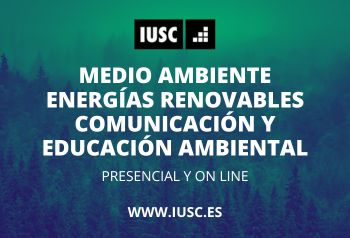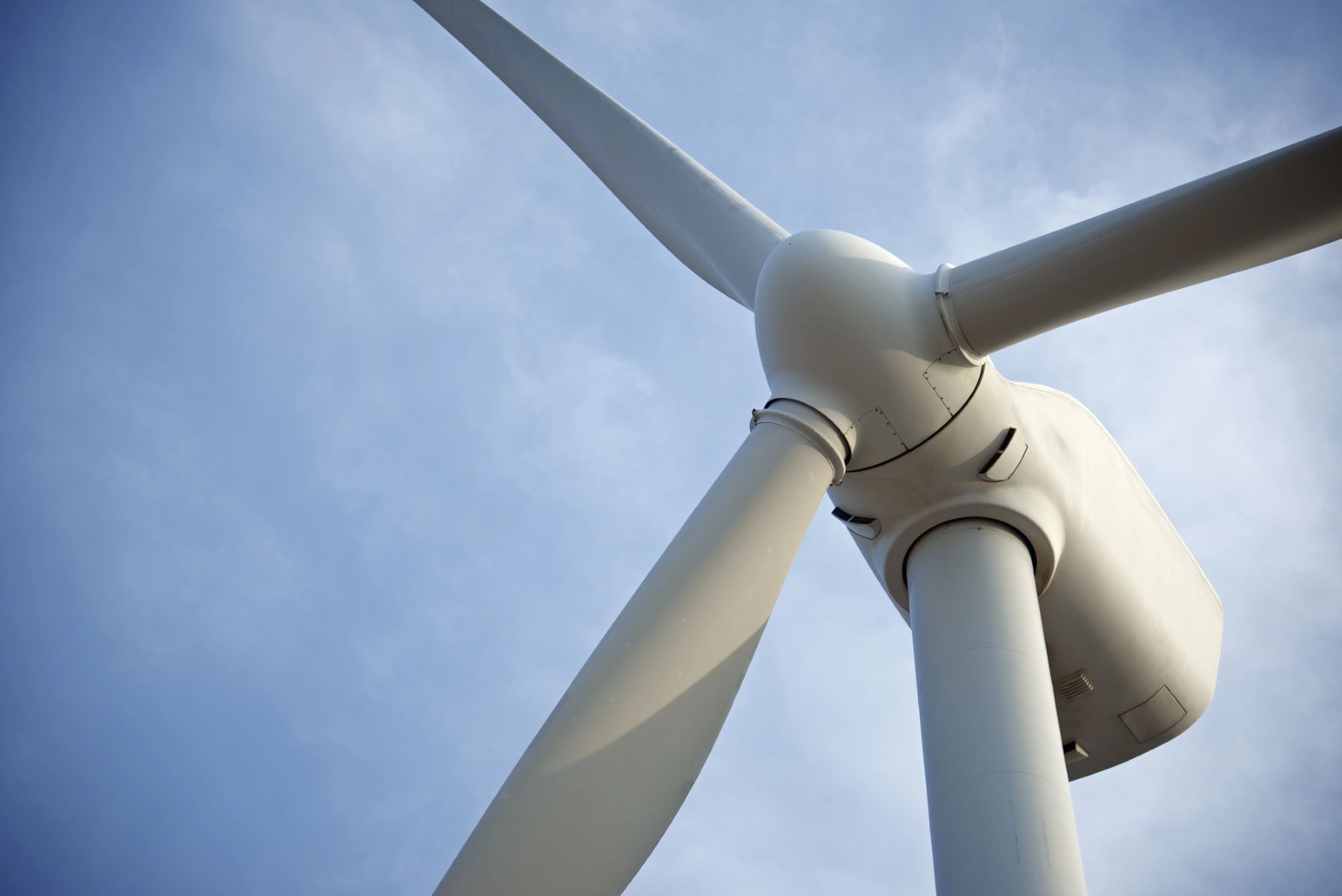The EIA, the American Environmental Investigation Agency, has investigated the value chain linked to wind turbines and discovered that several international manufacturers use balsa wood for their construction, which is believed to be linked to illegal logging in the Amazon.
International manufacturers of blades used for wind energy generation use balsa wood (Ochroma pyramidale) which is linked to illegal logging in the Amazon. contribute to the violation of the rights of indigenous peopleswhich causes environmental damage and corruption. These are some recent findings from the United States Environmental Investigation Agency (EIA).
The non-governmental organization that investigates crimes against wildlife and the environment published the document Ill Wind in October. From crimes in the Amazon rainforest in Ecuador to wind turbines in the US and China, where he presents the findings of his research into the wood used to build wind energy turbines.

“Our research shows that a large part of wild raft comes from illegal loggingHaibing Ma, EIA Asia policy specialist and lead author of the publication, said via email.
In its investigation, the non-governmental organization states that representatives of Ecuadorian plantations admitted to mixing the wood from their crops with wild balsa originating from the Ecuadorian and Peruvian Amazon region.

“The balsa is a tropical tree native to the Amazonknown for its fast growth and light wood,” explains Belén Páez, president of the Pachamama Foundation. “It is of great ecological and cultural importance in the Amazon,” he adds.
This is a pioneer species, that is, it can quickly colonize areas where vegetation has been lost, promoting the natural regeneration of the tropical forest. Because of their qualities are the indigenous peoples of the Amazon They use this wood to build traditional boats.
The policies of the United States and China to replace fossil energies with renewable alternatives have promoted the large-scale development of wind turbines for electrical energy generation. The The raw material for the manufacture of the knives is balsa wood.. The increase in demand has in turn led to “the increase in forest crime in the Ecuadorian Amazon,” according to the EIA publication.
From the Amazon to China
Ecuador supplies about 90% of the world’s balsa wood, according to the EIA study, which is based on data from the Global Wind Energy Council. Between 2019 and August 2024, Ecuador sent approximately 163,681 tons of raft to ChinaThat corresponds to 79% of the total Ecuadorian exports of this forest product, according to public data from the Central Bank of Ecuador (BCE). During the same period, 11,614 tons were destined for the United States, representing 5% of total exports. The remaining 16% were sent to a country quarantine.
Between 2018 and 2020 the The global demand for balsa wood has almost quadrupled. In 2018, Ecuador exported 19,226 tons of balsa, while in 2020 this number rose to 74,680, according to ECB data.
The EIA conducted an undercover investigation to “encourage open discussions about how game was harvested smoothly“Haibing Ma explained it to Mongabay Latam. The investigation focused on major balsa exporters including Plantabal SA, Ecuabal, Mamba Wood and Fadelma.
Plantabal SA, a subsidiary of the American company 3A Composites Core Materials, is the owner Ecuador has the most extensive balsa plantationswith 14,000 hectares. “Other companies typically have plantations between 100 and 1,000 hectares,” the report says.
The EIA assures that the high demand for turbines for energy generation exceeded the capacity of the wood supply. So the wild raft became the solution.
An Ecuabal representative admitted to EIA investigators that the company supplies itself with 50% plantation and 50% wild balsa. Mamba wood uses 30% wildly smooth, according to the EIA finding. And a member of Fadelma assured that Plantabal SA uses up to 60% wild balsa. Mongabay Latam sent emails with interview requests to the three companies identified in the EIA investigation. Nobody responded.
“We do not know on what data the (EIA) study is based,” the Ministry of Agriculture and Livestock (MAG), a department, responded via email to a request for information. responsible for checking forest plantations. Regarding the wood from industrial plantations that the EIA assures that the industry uses, the government agency limited itself to pointing out that the balsa data it manages corresponds only to legal extraction.
Mongabay Latam has also requested information from the Ecuadorian Association of Forestry and Timber Industry (AIMA), as well as from the Ministry of Environment, Water and Ecological Transition (MAATE), a department responsible for issuing forestry permits to property owners with approved management plans. No response was received.
How does this affect indigenous peoples?
The companies mentioned in the EIA study are dependent on informal intermediaries for the supply of wood. Indigenous peoples from the north of the Ecuadorian Amazon, including the Siekopai and A’i Cofán, in the south, where the Shuar and Achuar live, were affected by the exploitation of balsa, This is evident from the Renewable Energy reportcleared jungles, from the non-governmental organization Acción Ecológica.
In April 2021, the Pachamama Foundation reported that there were 80 indigenous communities exposed to unequal negotiations. While the cubic meter of balsa was exported for $722, communities received only 22 cents per tree.
In addition, illegal actors smuggle products from Peru to Ecuador, via the wide and poorly controlled Amazon border that both countries share. That’s what they do it for normal border crossings, thanks to forgery of documents or bribes agents to check. The Peruvian prosecutor’s office conducted an investigation called “Los Clanes de la Topa” (as the raft is known in Peru), which resulted in the arrest of 18 people, including Ecuadorians and Peruvians.
“Many of the major importers of China is also Ecuador’s main exporter,” the report said. Companies such as 3A Composites Core Materials, Gurit and Diab have subsidiaries in China.
To close the loop, the EIA found that major Chinese wind turbine manufacturers, including Goldwind, Mingyang and CSSC, have used balsa imported from Ecuadorian traders that perpetuated the dynamics described above. The American company GE Vernova, with factories in China, “has supply chains with a similar risk of illegal rafting”.
Smooth for wind blades in China?
The EIA warns about this in its research abrupt change in demand for wind turbines in China It will have a major impact on the Ecuadorian Amazon, as already happened between 2019 and 2020, when raft imports tripled.
“In accordance with China’s wind energy development plans at both provincial and national levels, the targets for the period 2021-2025 propose double the installed capacity during the previous period“Haibing Ma told Mongabay Latam. “Industry insiders have informed us that demand for balsa from China has started to rise in the 2023-2024 period, indicating that a new boom could be on the horizon,” he added.
The Ministry of Agriculture of Ecuador assured that the exporters’ sources of supply are the producers who have forest plantations or that they have forest restoration trees, ignoring that industry insiders acknowledged that a large percentage of the raft comes from illegal logging.
In its response to Mongabay Latam, the ministry assured that the agency, through prior assessment processes, “verifies on site or through geographic information systems the existence of the plantation in the location for which permission is sought. issuance of a forestry permit”.
In 2019, the Environmental Protection Unit (UPMA) of the National Police of Ecuador retained 1,282 cubic meters of raft that did not pass the documents necessary to prove its legality; The following year the amount rose to 5,502. Between the years 2021 and 2023, the quantity did not exceed 2,300 cubic meters. In August 2024, 1,044 cubic meters of raft was seized.
Las provinces most affected by illegal logging They were Esmeraldas, on the coast, and Orellana, Pastaza, Sucumbíos and Napo, in the Amazon, Major Víctor Hugo Carrera, head of the Operational Coordination Department of the UPMA, assured Mongabay Latam by telephone.
For Belén Páez, president of the Pachamama Foundation, the boom in raft mining recorded in 2020 resulted in the felling of almost 24,000 trees on about 1,000 hectares in the Achuar area, Pastaza province. This sudden loss of trees prompted the Pachamama Foundation, together with the Achuar Nationality, to a sustainable management plan for the extraction of this resource.
This plan includes the creation of a community business model and a social-ecological monitoring system that guarantees the traceability of wood. “The goal is balance the generation of economic income for communities with forest conservation and long-term sustainability,” Páez explains.
Another measure that could encourage improved forest management and traceability in light of a new surge in demand for fleets is the European Union Deforestation Regulation (EUDR), says the EIA’s Haibing Ma. The EUDR was intended to enter into force in December 2024. However, its implementation will be postponed until December 2025. This framework prohibits commercialization of raft produced by deforestation or degradation of the forests, the researcher explains.
About 10% of exports This wood from Ecuador goes to European countriesThis is evident from data from the ECB. “However, wind blades or turbines manufactured in China and then imported into the European Union as finished products are not covered by the EUDR,” the EIA spokesperson said. “However, the list of covered products may be changed in future revisions.” Key players in the Ecuadorian industry admitted that this is common mix wood from plantations with wood from wild trees.
The the demand for raft from China is currently said to be increasingHowever, the Ecuadorian agency responsible for forest plantations maintains the same control measures that have not worked in the past.
Balsa wood that has been harvested illegally increases the already enormous damage being done to the Amazon region and its biodiversity. Therefore, situations like this must stop, regardless of what means are used to achieve it.

